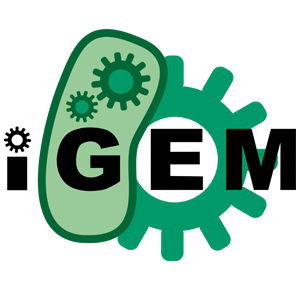Team:UiOslo Norway/Project
From 2014.igem.org
StianLagstad (Talk | contribs) |
|||
| Line 12: | Line 12: | ||
<div class="container"> | <div class="container"> | ||
<div class="row"> | <div class="row"> | ||
| - | <p><img src="https://static.igem.org/mediawiki/2014/d/d8/UiO_Oslo_signalingmechanism.png"></p> | + | <p><img src="https://static.igem.org/mediawiki/2014/d/d8/UiO_Oslo_signalingmechanism.png"></p> |
</div> | </div> | ||
</div> | </div> | ||
| Line 20: | Line 20: | ||
<div class="row"> | <div class="row"> | ||
<div class="col-md-12"> | <div class="col-md-12"> | ||
| - | < | + | <h2>Our Project - The microOrganizer</h2> |
| - | <p> | + | <p>The aim of our project was to build a system for physically connecting different bacteria in a predetermined manner. Throughout the iGEM competition we have designed surface markers that enable bacteria to bind to each other and to respond to the binding by a mechanism that would allow us to select for bound bacteria. A succesful system would allow us to organize different types of bacteria in a culture and we have therefor named our project «The microOrganizer».</p> |
| - | + | ||
| - | + | ||
| - | + | ||
| - | + | ||
| - | + | ||
| - | + | ||
| - | + | ||
| - | + | ||
| - | + | ||
| - | + | ||
| - | + | ||
| - | + | ||
</div> | </div> | ||
</div> | </div> | ||
<div class="row"> | <div class="row"> | ||
<div class="col-md-12"> | <div class="col-md-12"> | ||
| - | <h3> | + | <h2>The Parts</h2> |
| - | <p>A | + | <h3>Split Enzyme Principle</h3> |
| - | + | <p>A split enzyme is an enzyme split into two or more non-functional parts with intact tertiary structure. This means that the enzyme can be active if the different parts come together and assemble into the original enzyme. The enzyme parts have a natural affinity for each other and can assemble spontanously. We wanted to expose two different parts of a split enzyme on the surface of different bacteria.</p> | |
| - | + | ||
| - | + | ||
| - | + | ||
| - | + | ||
| - | + | ||
| - | + | ||
| - | + | ||
| - | + | ||
</div> | </div> | ||
</div> | </div> | ||
<div class="row"> | <div class="row"> | ||
<div class="col-md-12"> | <div class="col-md-12"> | ||
| - | <h3> | + | <h3>Autotransporters</h3> |
| - | <p> | + | <p>Wild type E.coli can express proteins on their surface by using a protein channeling system called an autotransporter. This proteins assemble themselves to a channel in the bacterial membrane and any proteins connected to them will be threaded through this channel and presented to the outside of the bacteria. The channel itself functions as a membrane anchor. We aimed to connect our split enzyme parts to the autotransporter and present them on the bacterial surface.</p> |
| - | + | ||
| - | + | ||
| - | + | ||
</div> | </div> | ||
</div> | </div> | ||
<div class="row"> | <div class="row"> | ||
<div class="col-md-12"> | <div class="col-md-12"> | ||
| - | <h3> | + | <h3>Selection Mechanism</h3> |
| - | <p> | + | <p>By using a split enzyme which is active only when the different parts are assembled, the enzyme activity is an obvious marker of a succesful surface interaction between the bacteria. To succesfully establish a selection mechanism we also needed the bacteria to respond to the enzyme activity. We therefor wanted an enzyme which substrate could induce a particular response in the bacteria that the enzyme product could not. If the presence of the substrate could kill the bacteria and the presence of the product could not, the enzyme activity could protect the interacting bacteria and do the job as a selction mechanism.</p> |
| + | </div> | ||
| + | </div> | ||
| + | <div class="row"> | ||
| + | <div class="col-md-12"> | ||
| + | <h3>The Details</h3> | ||
| + | <p>We choose to use beta-galactosidase as our enzyme and beta-galactosyl glycerol as our substrate. Beta-galactosyl glycerol is a small beta-galatoside that can cross the E.coli membranes and enter cytoplasma through a constitutivly expressed galactose-permease. Beta-galactosyl glycerol can also bind to the lac-operon repressor in the same manner as allolactose and inhibit its repressor activity – thus function as an inducer of the lac-operon. Beta-galactosyl glycerol also makes a potential substrate for beta-galactosidase which splits beta-galactosyl glycerol into glucose and galactose1).</p> | ||
| + | <p>A toxic gene under the control of the Lac-promoter would therefore kill cells that are not able to cleave beta-galactosyl glycerol.</p> | ||
| + | <p>Beta-galactosidase is expressed in wild type E.coli from the Lac-Z gene which is a part of the Lac-operon. Beta-galactosidase can be split into two different parts with an intact tertiary structure and is therefore a good alternativ for our split enzyme. The two parts are coded by what has been called Lac-Z alpha and Lac-Z beta respectivly.</p> | ||
| + | <p>The final version of the microorganizer system would be as follow. To different strains of bacteria would express a fusion protein consisting of the membrane part of an autotransporter and one of either Lac-Z alpha or Lac-Z beta. Both strains would also have a toxic gene under the control of the Lac-promoter. The two strains would be mixed in a medium containing beta-galactosyl glycerol. Bacteria with no partners would have beta-galactosyl glycerol flowing into cytoplasma and induce transcription from the Lac-promoter and kill them. Bacteria that are bound to each other through the beta-galactosidase parts will cleave galactosyl-glycerol into galactose and glucose and make sure the bacteria can survive.</p> | ||
| + | <p>To avoid a short cut in the mechanism we would have to use bacteria were the Lac-operon is deleted so there is no cytoplasmic beta-galactosyl activity.</p> | ||
| + | </div> | ||
| + | </div> | ||
| + | <div class="row"> | ||
| + | <div class="col-md-12"> | ||
| + | <h4>Sources</h4> | ||
| + | <p>1) Egel, R. (1988) The "lac" operon: an irrelevant paradox? Trends in Genetics 4:31.</p> | ||
</div> | </div> | ||
</div> | </div> | ||
Revision as of 13:28, 17 October 2014
Project Overview

Our Project - The microOrganizer
The aim of our project was to build a system for physically connecting different bacteria in a predetermined manner. Throughout the iGEM competition we have designed surface markers that enable bacteria to bind to each other and to respond to the binding by a mechanism that would allow us to select for bound bacteria. A succesful system would allow us to organize different types of bacteria in a culture and we have therefor named our project «The microOrganizer».
The Parts
Split Enzyme Principle
A split enzyme is an enzyme split into two or more non-functional parts with intact tertiary structure. This means that the enzyme can be active if the different parts come together and assemble into the original enzyme. The enzyme parts have a natural affinity for each other and can assemble spontanously. We wanted to expose two different parts of a split enzyme on the surface of different bacteria.
Autotransporters
Wild type E.coli can express proteins on their surface by using a protein channeling system called an autotransporter. This proteins assemble themselves to a channel in the bacterial membrane and any proteins connected to them will be threaded through this channel and presented to the outside of the bacteria. The channel itself functions as a membrane anchor. We aimed to connect our split enzyme parts to the autotransporter and present them on the bacterial surface.
Selection Mechanism
By using a split enzyme which is active only when the different parts are assembled, the enzyme activity is an obvious marker of a succesful surface interaction between the bacteria. To succesfully establish a selection mechanism we also needed the bacteria to respond to the enzyme activity. We therefor wanted an enzyme which substrate could induce a particular response in the bacteria that the enzyme product could not. If the presence of the substrate could kill the bacteria and the presence of the product could not, the enzyme activity could protect the interacting bacteria and do the job as a selction mechanism.
The Details
We choose to use beta-galactosidase as our enzyme and beta-galactosyl glycerol as our substrate. Beta-galactosyl glycerol is a small beta-galatoside that can cross the E.coli membranes and enter cytoplasma through a constitutivly expressed galactose-permease. Beta-galactosyl glycerol can also bind to the lac-operon repressor in the same manner as allolactose and inhibit its repressor activity – thus function as an inducer of the lac-operon. Beta-galactosyl glycerol also makes a potential substrate for beta-galactosidase which splits beta-galactosyl glycerol into glucose and galactose1).
A toxic gene under the control of the Lac-promoter would therefore kill cells that are not able to cleave beta-galactosyl glycerol.
Beta-galactosidase is expressed in wild type E.coli from the Lac-Z gene which is a part of the Lac-operon. Beta-galactosidase can be split into two different parts with an intact tertiary structure and is therefore a good alternativ for our split enzyme. The two parts are coded by what has been called Lac-Z alpha and Lac-Z beta respectivly.
The final version of the microorganizer system would be as follow. To different strains of bacteria would express a fusion protein consisting of the membrane part of an autotransporter and one of either Lac-Z alpha or Lac-Z beta. Both strains would also have a toxic gene under the control of the Lac-promoter. The two strains would be mixed in a medium containing beta-galactosyl glycerol. Bacteria with no partners would have beta-galactosyl glycerol flowing into cytoplasma and induce transcription from the Lac-promoter and kill them. Bacteria that are bound to each other through the beta-galactosidase parts will cleave galactosyl-glycerol into galactose and glucose and make sure the bacteria can survive.
To avoid a short cut in the mechanism we would have to use bacteria were the Lac-operon is deleted so there is no cytoplasmic beta-galactosyl activity.
Sources
1) Egel, R. (1988) The "lac" operon: an irrelevant paradox? Trends in Genetics 4:31.
 "
"

